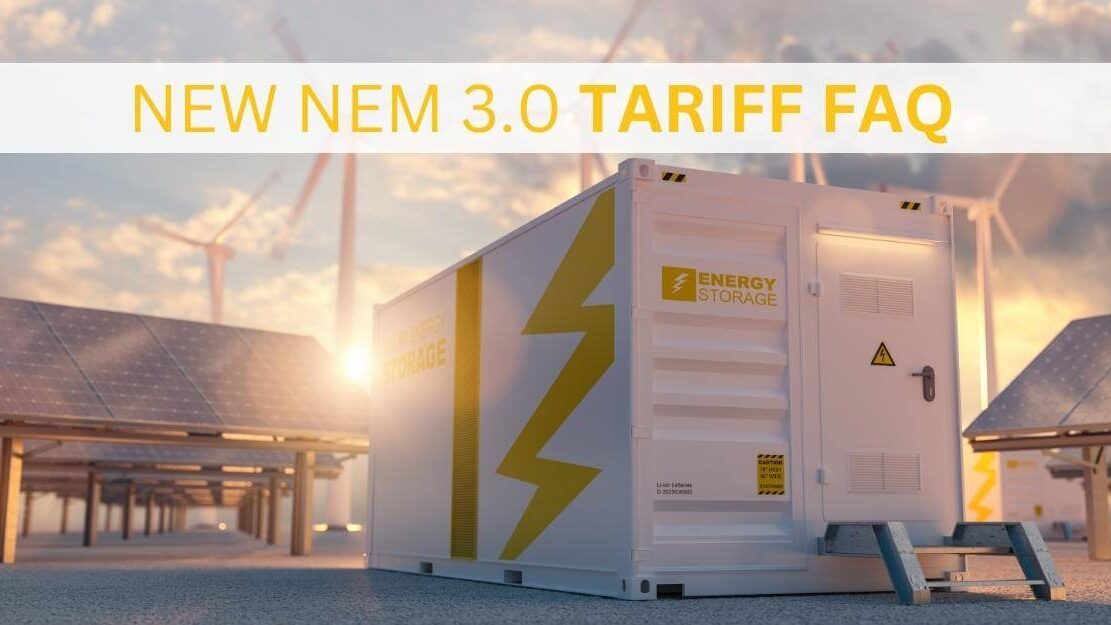NEM 3.0 Tariff FAQ
Sungenia compiled Net Energy Metering (NEM) 3 frequently asked questions, answers, and important information.
Which utilities are affected by NEM 3.0 rules?
NEM 3.0 tariff rules apply specifically to customers of PG&E, SCE, and SDG&E.
If a customer signs up for solar shortly after the April 14, 2023 deadline, how are they billed initially?
The utilities do not have the NEM 3.0 billing system set up yet. As a result, customers who enroll in NEM 3.0 will initially be billed using NEM 2.0 rules (credited nearly at retail rate, annual billing, and can pick any TOU schedule), and will be automatically switched to NEM 3.0 rules when the utilities finish building the new billing system. This process may take several months to a year, so customers could possibly take advantage of a summer of production and credits.
However, most solar installers have acquired a lengthy backlog of customers that still need to.
What are the required electrification rates for NEM 3.0?
NEM 3.0 customers are required to enroll in a TOU rate that has a big difference between on-peak and off-peak costs. Right now, the available electrification rates are E-ELEC for PG&E, TOU-D-PRIME for SCE, and EV-TOU-5 for SDG&E. We expect more rates to be added in the future.
Does NEM 3.0 have a solar tax or a solar-only fee?
No, the final NEM 3.0 rules do not feature a solar tax or $8/kW/month cost. NEM 3.0 customers will have a fixed monthly fee of around $15/month as part of the electrification rates, the same as non-solar customers.
What other fees are the utilities charging?
Besides the fixed monthly fee described above, there is still a minimum daily charge for certain rates. For systems that produce more than they consume, this minimum charge goes into effect.
In addition, California will be introducing a new income-based monthly fee for all consumers, not just solar owners. While the exact amounts are still being determined, it will be rolled out in 2025 and proposed charges are as high as $128 per month.
Do NEM 3.0 bill credits roll over?
Credits for exported energy (including battery exports to the grid) are carried over from month to month. They do expire at the end of a true-up period, which defaults to the anniversary of the PTO date. Customers may make a one-time election to update the true-up month, and we expect that March or April will be the best time. However, we don’t expect customers to accrue a substantial amount of credits unless they are discharging a battery to the grid during the summer, so this may not matter much. Under NEM 3.0, payments for net charges are expected every month despite the annual true-up date. Payment and billing details may also depend on if you are enrolled with a Community Choice Aggregation Plan.
What is the best system size and orientation for a NEM 3.0 solar-only system?
Our calculations indicate that a southwest facing system is the best option in NEM 3.0, while south-facing and west-facing systems are nearly as valuable to the homeowner. In terms of energy offset, having a system produce around 50% of the annual usage minimizes the homeowner’s payback period, although they will still have to pay some balance to the utility each month.
What is the payback period for a solar-only system?
We estimate a typical payback period will be anywhere from 7-12 years. A solar-only system will offset about 50% of your usage, meaning there will be a residual bill.
Do I need to have a battery for NEM 3.0?
No, a battery is not required for NEM 3.0 customers. However, a battery may provide more bill savings and pay for itself if operated correctly. A solar system paired with one or more batteries can increase the energy offset up to 90% and decrease the payback times to 5-7 years. Payback periods of 10 years or greater are typical in nearly every other market in the US.
Is a battery worth it?
A battery will result in greater bill savings and a shorter payback period, but the total cost of the system will significantly increase. How you plan to pay for the system will determine whether or not a battery is financially justifiable. The optimal financing period is now closer to 12-20 years instead of our previously recommended 8 years (with Wheelhouse Credit Union). Besides the financial benefits of being able to store energy to use during on-peak hours, you will also have the added benefit of backup power. With the rise of blackouts and brownouts, this may be a huge relief to have in the future.
How long do batteries last?
Unlike most industry standard 25-year warranties, a battery typically has a 10-year warranty, though it may function for longer than a decade. When a battery stops working, it will be up to the customer whether or not to make another financial investment to replace the battery.
Sungenia is Here To Help
Sungenia is on a mission to simplify the solar process, provide the optimal equipment for every home, and create many satisfied friends along the way. Please don’t hesitate to contact us for more information, quality custom solar, and honest solar advice. We love talking solar!
Sungenia’s mission is to make the solar process as simple and honest as possible, provide the best solution, and to make as many happy friends as we can.

